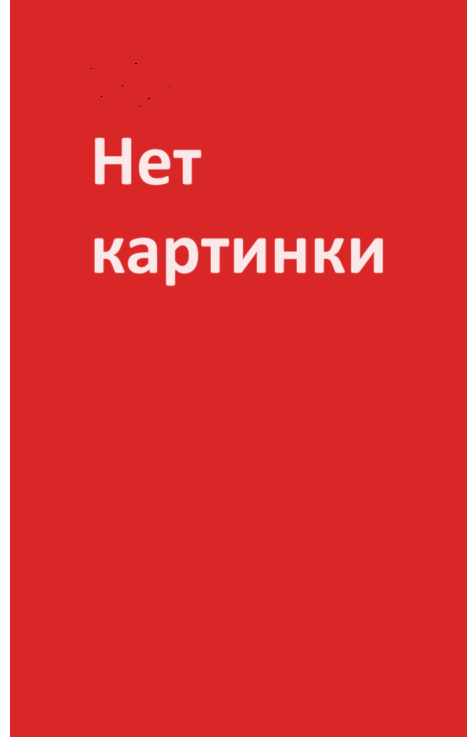Танец жизни. Новая наука о том, как клетка становится человеком
Шрифт:
[2] А. К. Hadjantonakis, V. Е. Papaioannou. Dynamic In Vivo Imaging and Cell Tracking Using a Histone Fluorescent Protein Fusion in Mice. BMC Biotechnology (2004).
[3] Florence Wianny, Magdalena Zernicka-Goetz. Specific Interference with Gene Function by Double-Stranded RNA in Early Mouse Development. Nature Cell Biology 2 (1999): 70—75.
[4] H. Bolton, S. J. L. Graham, N. Van der Aa, P. Kumar, K. Theunis,
E. Fernandez Gallardo, T. Voet, M. Zernicka-Goetz. Mouse Model of Chromosome Mosaicism Reveals Lineage-Specific Depletion of Aneuploid Cells and Normal Developmental Potential. Nature Communications 7 (2016): 11165. Doi:10.1038/ncommsl 1165.
[5] Maria-Elena Torres-Padilla, David-Emlyn Parfitt, Tony Kouzarides, Magdalena Zernicka-Goetz. Histone Arginine Methylation Regulates Pluripotency in the Early Mouse Embryo. Nature 445 (2007): 214—218. Doi:10.1038/nature05458.
Глава 9.
[1] С. R. Woese. A New Biology for a New Century. Microbiology and Molecular Biology Reviews 68. No. 2 (2004): 173-186.
[2] Leroy C. Stevens Jr., С. C. Little. Spontaneous Testicular Teratomas in an Inbred Strain of Mice. Proceedings of the National Academy of Sciences 40 (1954): 1080-1087.
[3] L. C. Stevens. Embryonic Potency of Embryoid Bodies Derived from a Transplantable Testicular Teratoma of the Mouse. Developmental Biology 2 (1960): 285-297.
[4] G. B. Pierce, F. J. Dixon. Testicular Teratomas. I. Demonstration of Teratogenesis by Metamorphosis of Multipotential Cells. Cancer 12 (1959): 573-583.
[5] Martin Evans. Origin of Mouse Embryonal Carcinoma Cells and the Possibility of Their Direct Isolation into Tissue Culture. Journal of Reproduction and Fertility 62 (1981): 625—631,jrf.0.0620625.
[6] M. J. Evans, M. FI. Kaufman. Establishment in Culture of Pluripotential Cells from Mouse Embryos. Nature 292 (1981): 154—156.
[7] G. R. Martin. Isolation of a Pluripotent Cell Line from Early Mouse Embryos Cultured in Medium Conditioned by Teratocarcinoma Stem Cells. Proceedings of the National Academy of Sciences 78. No. 12 (1981): 7634-7638.
[8] D. ten Berge, W. Koole, C. Fuerer, M. Fish, E. Eroglu, R. Nusse. Wnt Signaling Mediates Self-Organization and Axis Formation in Embryoid Bodies. Cell Stem Cell 3. No. 5 (2008): 508-518. Doi: 10.1016/j. stem.2008.09.013.
[9] I. Bedzhov, M. Zernicka-Goetz. Self-Organizing Properties of Mouse Pluripotent Cells Initiate Morphogenesis upon Implantation. Cell 156 (2014): 1032-1044. Doi: 10.1016/j.cell.2014.01.023.
[10] Ibid.
[11] Susanne C. van den Brink, Peter Baillie-Johnson, Tina Balayo, An-na-Katerina Fladjantonakis, Sonja Nowotschin, David A. Turner, Alfonso Martinez Arias. Symmetry Breaking, Germ Layer Specification and Axial Organisation in Aggregates of Mouse Embryonic Stem Cells. Development 141 (2014): 4231—4242. Doi:10.1242/dev.l 13001.
[12] D. ten Berge, W. Koole, C. Fuerer, M. Fish, E. Eroglu, R. Nusse. Wnt Signaling Mediates Self-Organization and Axis Formation in Embry oid Bodies. Cell Stem Cell 3. No. 5 (2008): 508-518. Doi: 10.1016/j. stem.2008.09.013.
[13] R. S. Beddington, P. Rashbass, V. Wilson. Brachyury — A Gene Affecting Mouse Gastrulation and Early Organogenesis. Development Supplement (1992): 157-165.
[14] S. E. Flarrison, B. Sozen, N. Christodoulou, C. Kyprianou, M. Zernicka-Goetz. Assembly of Embryonic and Extraembryonic Stem Cells to Mimic Embryogenesis In Vitro. Science 356 (2017): eaall810. Doi: 10.1126/science.aall810.
[15] N. C. Rivron, J. Frias-Aldeguer, E. J. Vrij, J.-C. Boisset, J. Korving, J. Vivid, R. K. Truckenmiiller, A. van Oudenaarden, C. A. van Blit-terswijk, N. Geijsen. Blastocyst-Like Structures Generated Solely from Stem Cells. Nature 557 (2018): 106-111. Doi: 10.1038/s41586-018-0051-0.
[16] B. Sozen, G. Amadei, A. Cox, R. Wang, E. Na, S. Czukiewska, L. Chappell, T. Voet, G. Michel, N. Jing, D. M. Glover, M. Zer-nicka-Goetz. Self-Assembly of Embryonic and Two Extra-Embryonic Stem Cell Types into Gastrulating Embryo-Like Structures. Nature Cell Biology 20 (2018): 979-989. Doi: 10.1038/s41556-018-0147-7.
[17] Martin A. N owak. Five Rules for the Evolution of Cooperation. Science 314(2006): 1560-1563. Doi: 10.1126/science.l 133755.
[18] Why Mouse Matters. National Human Genome Research Institute, accessed April 5, 2019. URL: www.genome.gov/10001345/impor-tance-of-mouse-genome/.
[19] Nicolas Rivron, Martin Pera, Janet Rossant, Alfonso Arias, Magdalena Zernicka-Goetz, Jianping Fu, Susanne Van den Brink, Annelien Bredenoord, Wybo Dondorp, Guido de Wert, Insoo Hyun, Megan Munsie, Rosario Isasi. Debate Ethics of Embryo Models from Stem Cells. Nature 564 (2018): 183-185. Doi: 10.1038/d41586-018-07663-9.
[20] I. Martyn, T. Y. Kanno, A. Ruzo, E. D. Siggia, A. H. Brivanlou. Self-Organization of a Human Organizer by Combined Wnt and Nodal Signalling. Nature 558 (2018): 132-135. Doi: 10.1038/s41586-018-0150-y.
[21] John Aach, Jeantine Lunshof, Eswar Iyer, George M. Church. Addressing the Ethical Issues Raised by Synthetic Human Entities with Embryo-Like Features. eLife 6 (2017): e20674. URL: https:// elifesciences.org/articles/20674, doi: 10.7554/eLife.20674.
[22] H. C. Ott, T. S. Matthiesen, S.-K. Goh, L. D. Black, S. M. Kren, T. I. Netoff, D. A. Taylor. Perfusion-Decellularized Matrix: Using Nature’s Platform to Engineer a Bioartificial Heart. Nature Medicine 14 (2008): 213-221. Doi:10.1038/nml684.
[23] Rivron et al. Debate Ethics of Embryo Models, 183—185.
Глава 10. Новая эра синтетической биологии
[1] 3D Atlas of Human Embryology, Carnegie Stage 7, accessed April 5, 2019. URL:3D Atlas of Human Embryology, Carnegie Stage 23, accessed April 5, 2019. URL:nl/3 DAtlas_CS23-9226-v2016-03.pdf; 3D Atlas of Human Embryology, accessed April 5, 2019. URL: www.3dembryoatlas.com/.
[2] В. S. de Ваккег, К. Н. de Jong, J. Hagoort, К. de Bree, С. T. Besselink, F. E. C. de Kanter, T. Veldhuis, B. Bais, R. Schildmeijer, J. M. Rui-jter, R. J. Oostra, V. M. Christoffels, A. F. Moorman. An Interactive Three-Dimensional Digital Atlas and Quantitative Database of Human Development. Science 354 (2016): aag0053. Doi:10.1126/science. aag0053.
На границе империй. Том 6
6. Фортуна дама переменчивая
Фантастика:
боевая фантастика
космическая фантастика
попаданцы
рейтинг книги
Курсант: Назад в СССР 4
4. Курсант
Фантастика:
попаданцы
альтернативная история
рейтинг книги
С Новым Гадом
Любовные романы:
современные любовные романы
эро литература
рейтинг книги
Наследник
1. Рюрикова кровь
Фантастика:
научная фантастика
попаданцы
альтернативная история
рейтинг книги
